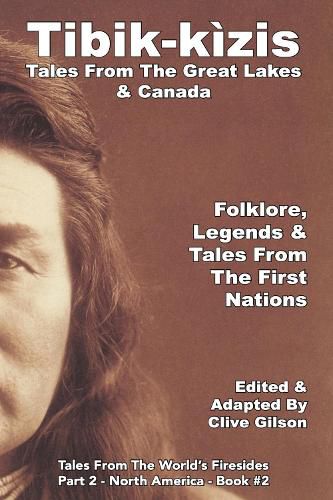Readings Newsletter
Become a Readings Member to make your shopping experience even easier.
Sign in or sign up for free!
You’re not far away from qualifying for FREE standard shipping within Australia
You’ve qualified for FREE standard shipping within Australia
The cart is loading…






This title is printed to order. This book may have been self-published. If so, we cannot guarantee the quality of the content. In the main most books will have gone through the editing process however some may not. We therefore suggest that you be aware of this before ordering this book. If in doubt check either the author or publisher’s details as we are unable to accept any returns unless they are faulty. Please contact us if you have any questions.
Among many Native cultures, storytelling was normally restricted to the long winter evenings. The Cree were one culture with a strict belief in this regard: During the summer, no stories founded on fiction were ever told, the Indigenous peoples believing that if any ‘fairy’ tales were told during that season when they were supposed to use their time to best advantage, the narrator would have his life destroyed by the lizard, which would suck his blood.
Some broad themes can be identified in Indigenous Canadian mythology. Creation myths are among the most sacred to many Indigenous cultures. Haida myths of the Raven, a celestial being , explain the creation of the sun. The Haida word for Raven means the one who is going to order things , and it was Raven who established the laws of nature and was present when people were first created.
Supernatural beings are prominent in many myths about the origin of places, animals, and other natural phenomena. Supernatural experiences by ordinary mortals are found in other myths. For example, the Chippewa have myths explaining the first corn and the first robin, triggered by a boy’s vision. Some myths explain the origins of sacred rituals or objects, such as sweat lodges, wampum, and the sun dance.
Folktales have been a part of the social and cultural life of Native American regardless of whether they were sedentary agriculturists or nomadic hunters. As they gathered around a fire at night, Native Americans could be transported to another world through the talent of a good storyteller. The effect was derived not only from the novelty of the tale itself but also from the imaginative skill of the narrator, who often added gestures and songs and occasionally adapted a particular tale to suit a certain culture. As I said at the beginning of this short preface, it’s been a delight to get to know these tales just a little, and I still have a long way to walk amongst the stories of so many more tribes and peoples across North America.
$9.00 standard shipping within Australia
FREE standard shipping within Australia for orders over $100.00
Express & International shipping calculated at checkout
This title is printed to order. This book may have been self-published. If so, we cannot guarantee the quality of the content. In the main most books will have gone through the editing process however some may not. We therefore suggest that you be aware of this before ordering this book. If in doubt check either the author or publisher’s details as we are unable to accept any returns unless they are faulty. Please contact us if you have any questions.
Among many Native cultures, storytelling was normally restricted to the long winter evenings. The Cree were one culture with a strict belief in this regard: During the summer, no stories founded on fiction were ever told, the Indigenous peoples believing that if any ‘fairy’ tales were told during that season when they were supposed to use their time to best advantage, the narrator would have his life destroyed by the lizard, which would suck his blood.
Some broad themes can be identified in Indigenous Canadian mythology. Creation myths are among the most sacred to many Indigenous cultures. Haida myths of the Raven, a celestial being , explain the creation of the sun. The Haida word for Raven means the one who is going to order things , and it was Raven who established the laws of nature and was present when people were first created.
Supernatural beings are prominent in many myths about the origin of places, animals, and other natural phenomena. Supernatural experiences by ordinary mortals are found in other myths. For example, the Chippewa have myths explaining the first corn and the first robin, triggered by a boy’s vision. Some myths explain the origins of sacred rituals or objects, such as sweat lodges, wampum, and the sun dance.
Folktales have been a part of the social and cultural life of Native American regardless of whether they were sedentary agriculturists or nomadic hunters. As they gathered around a fire at night, Native Americans could be transported to another world through the talent of a good storyteller. The effect was derived not only from the novelty of the tale itself but also from the imaginative skill of the narrator, who often added gestures and songs and occasionally adapted a particular tale to suit a certain culture. As I said at the beginning of this short preface, it’s been a delight to get to know these tales just a little, and I still have a long way to walk amongst the stories of so many more tribes and peoples across North America.